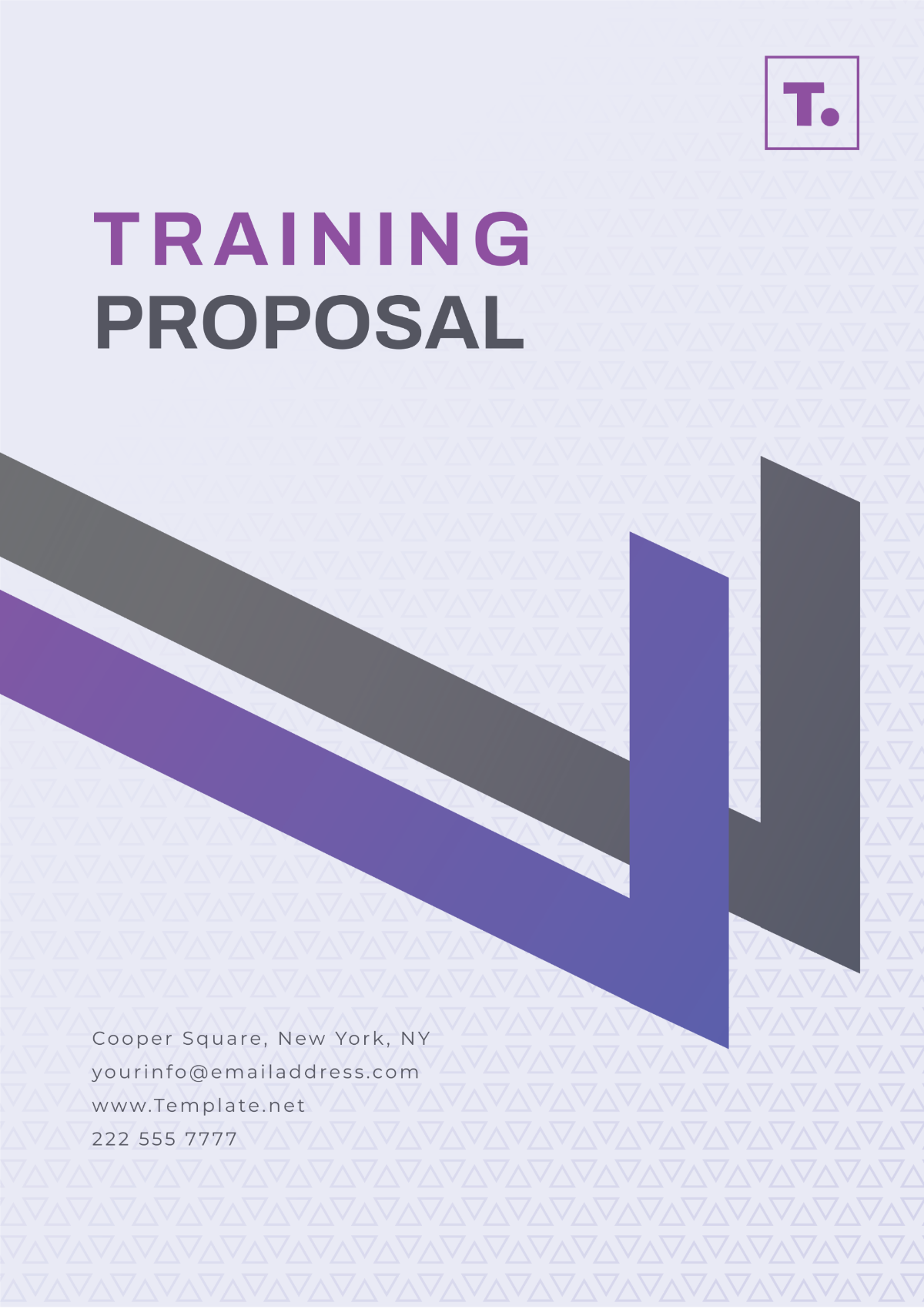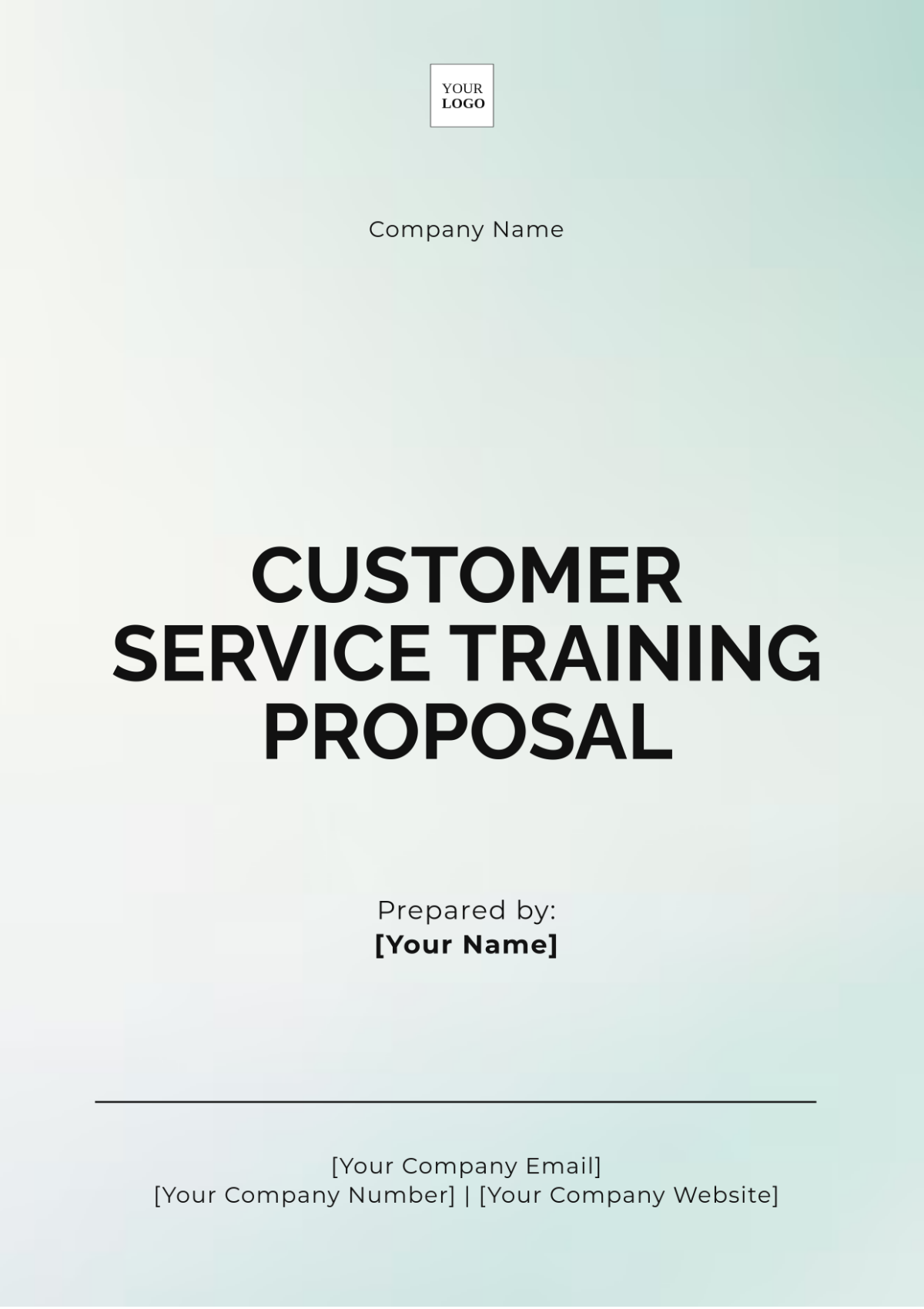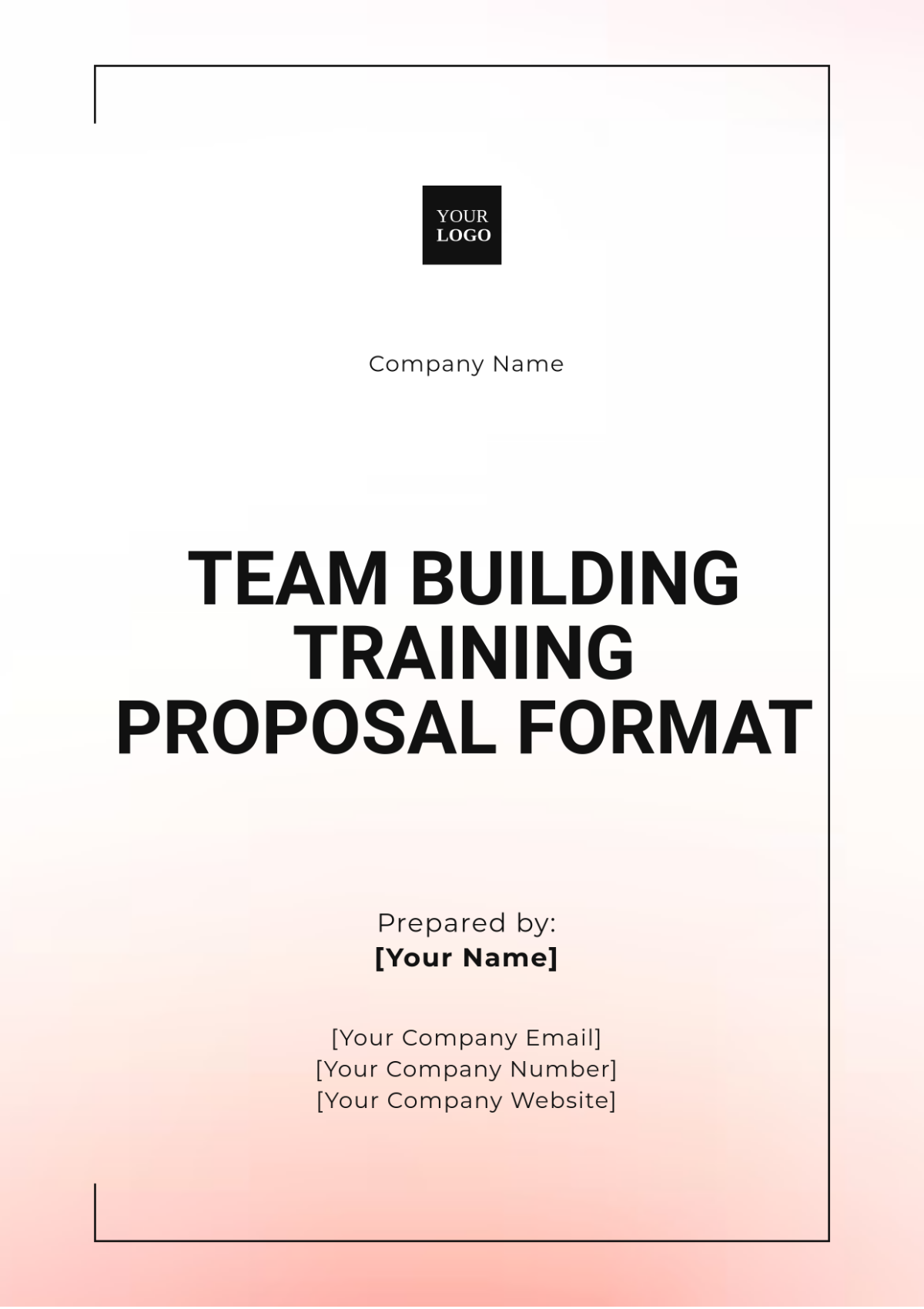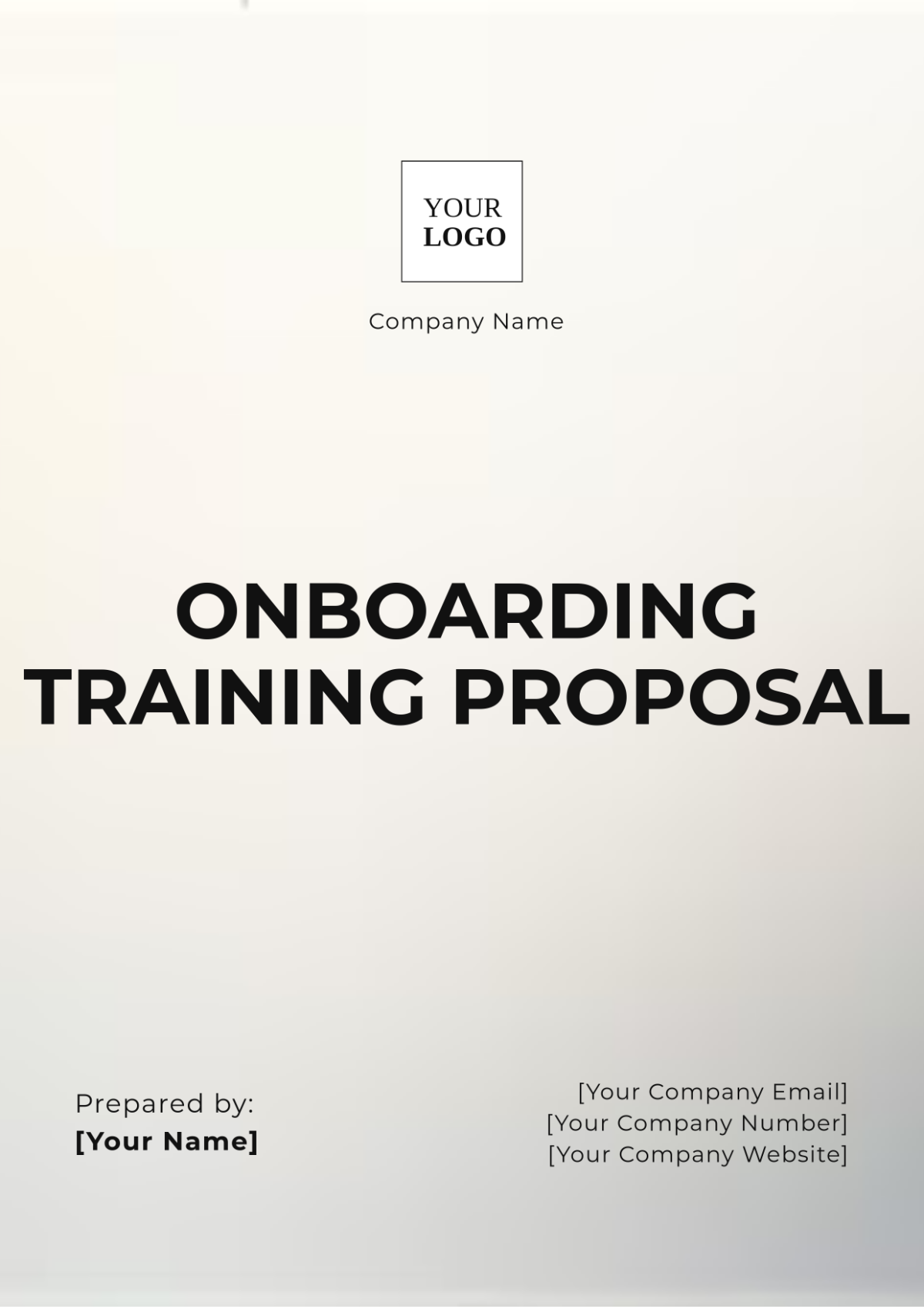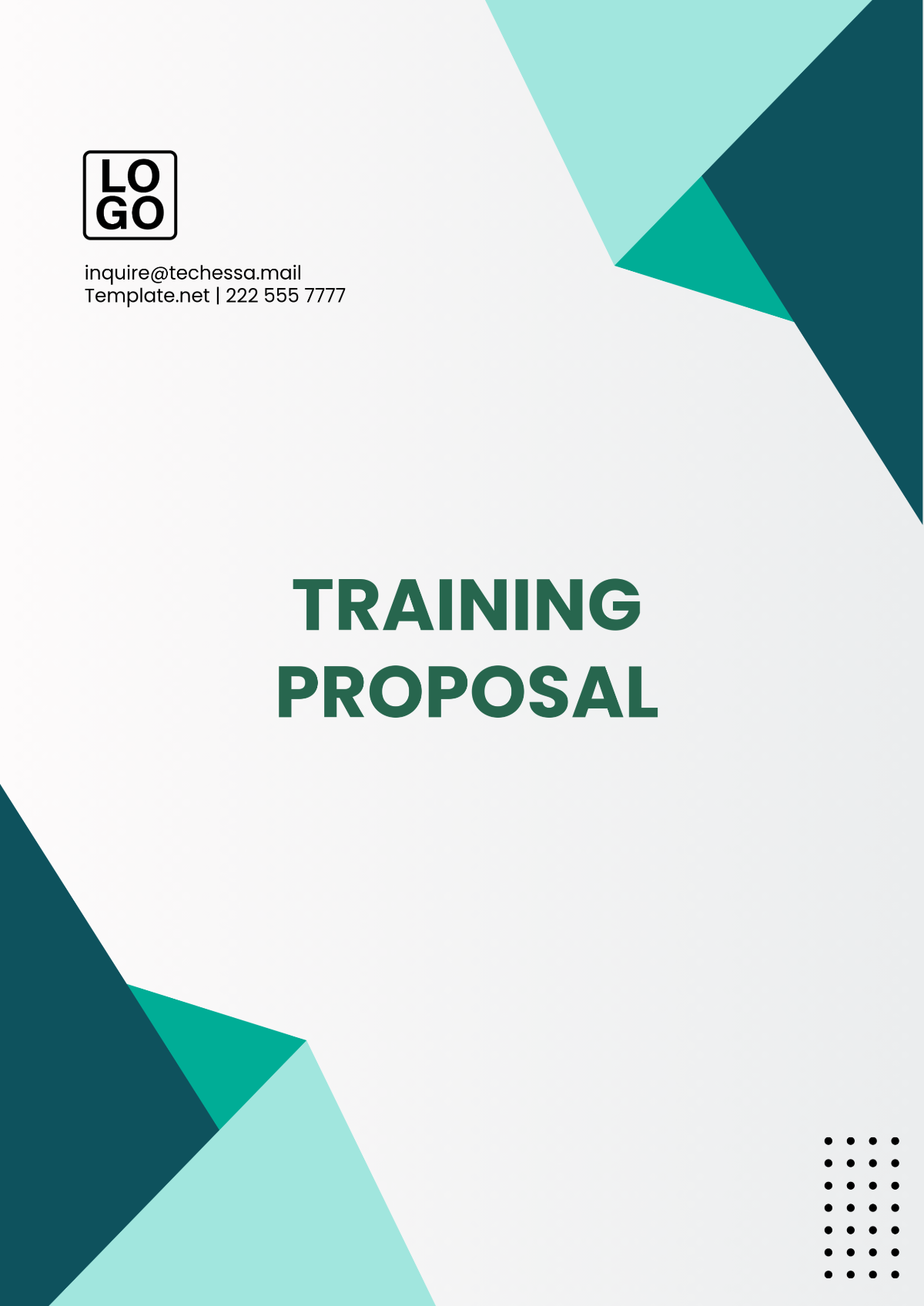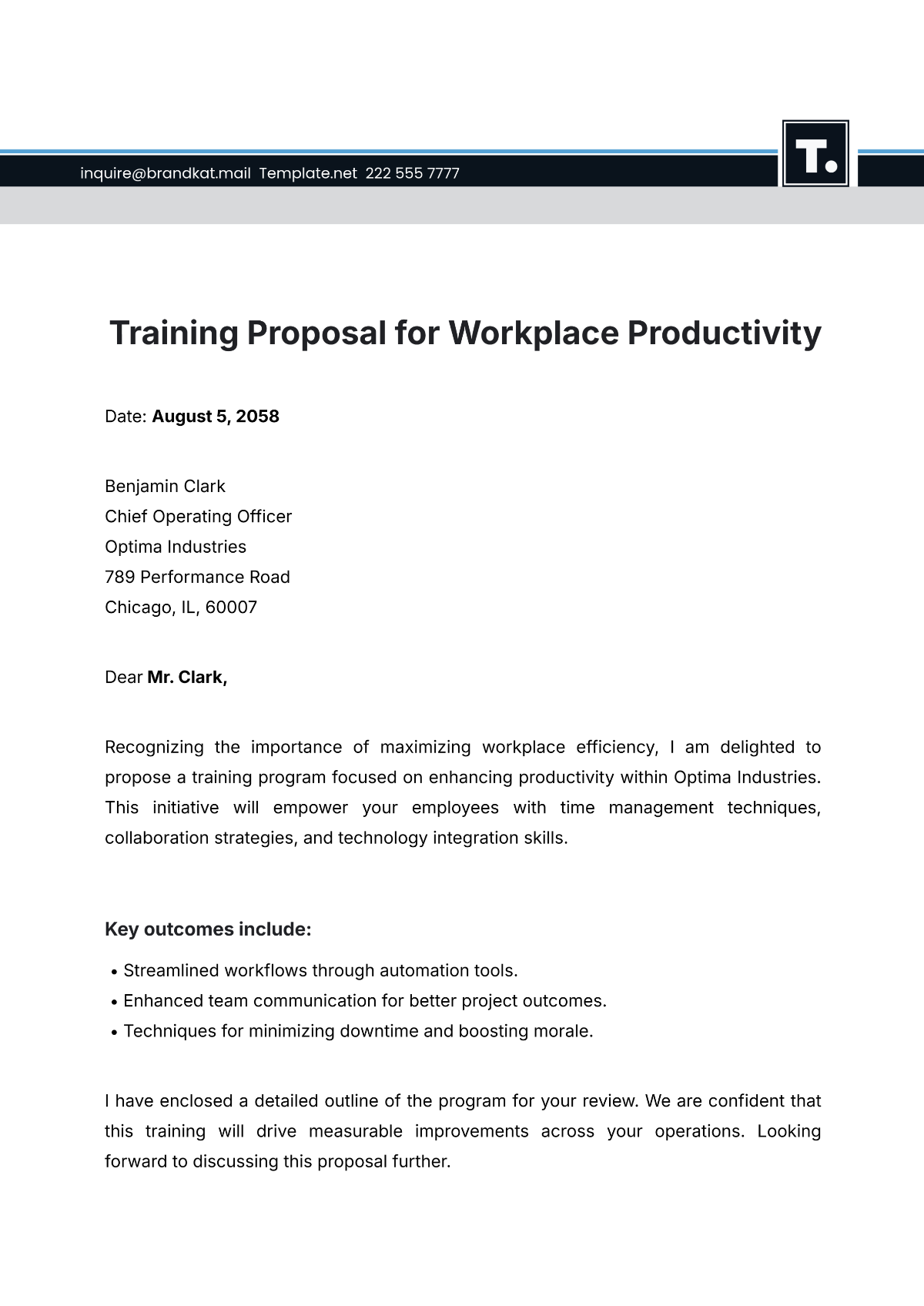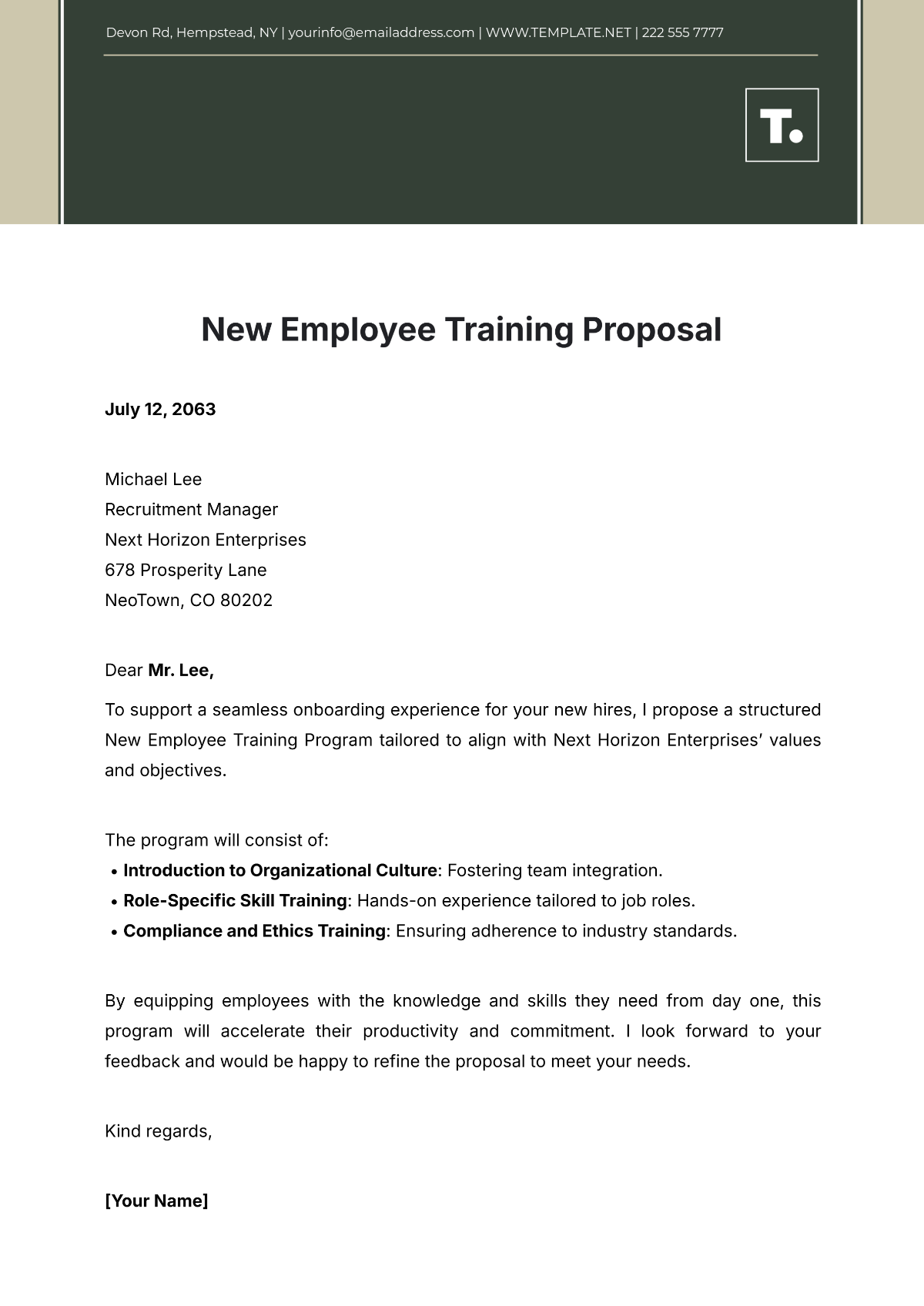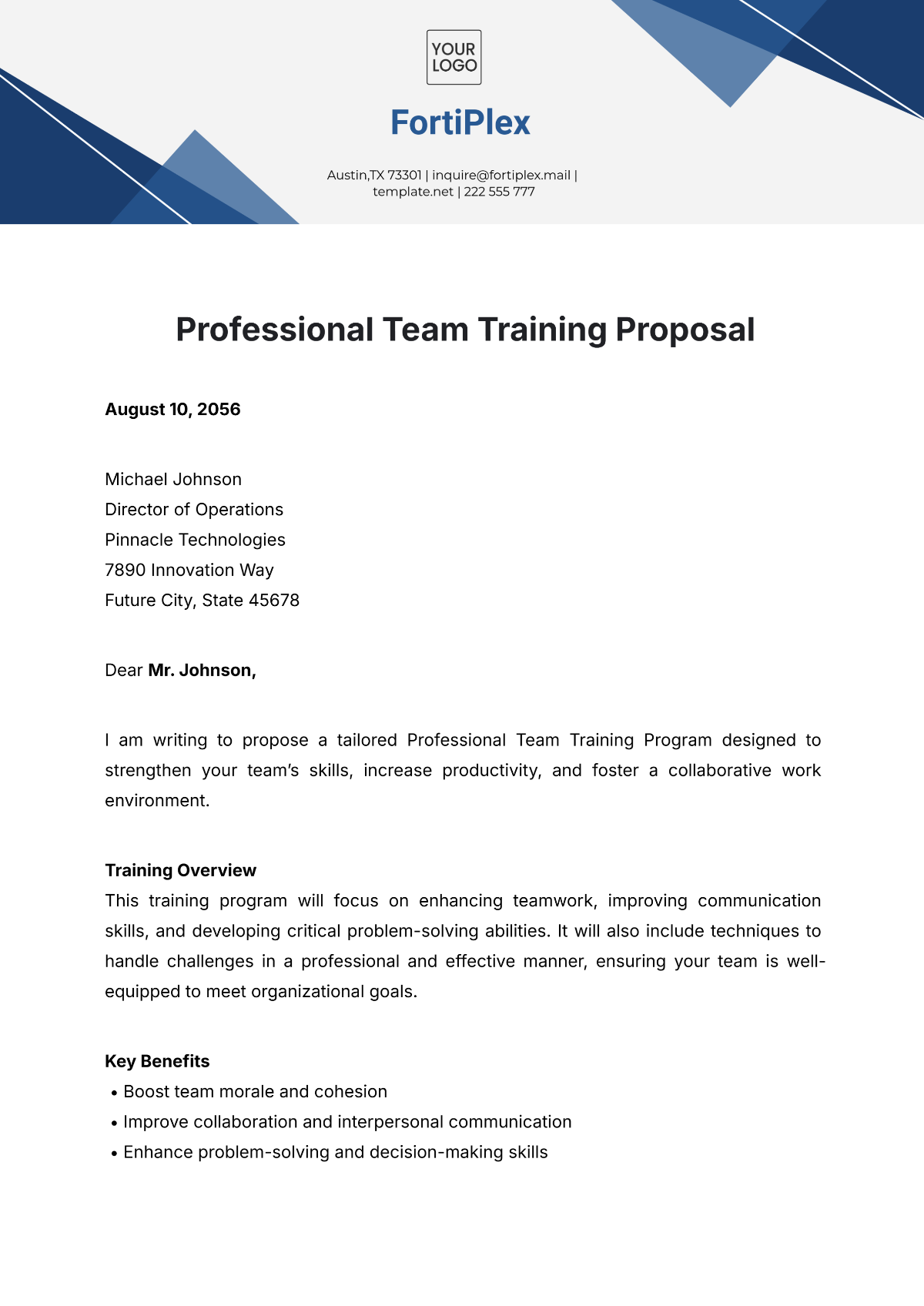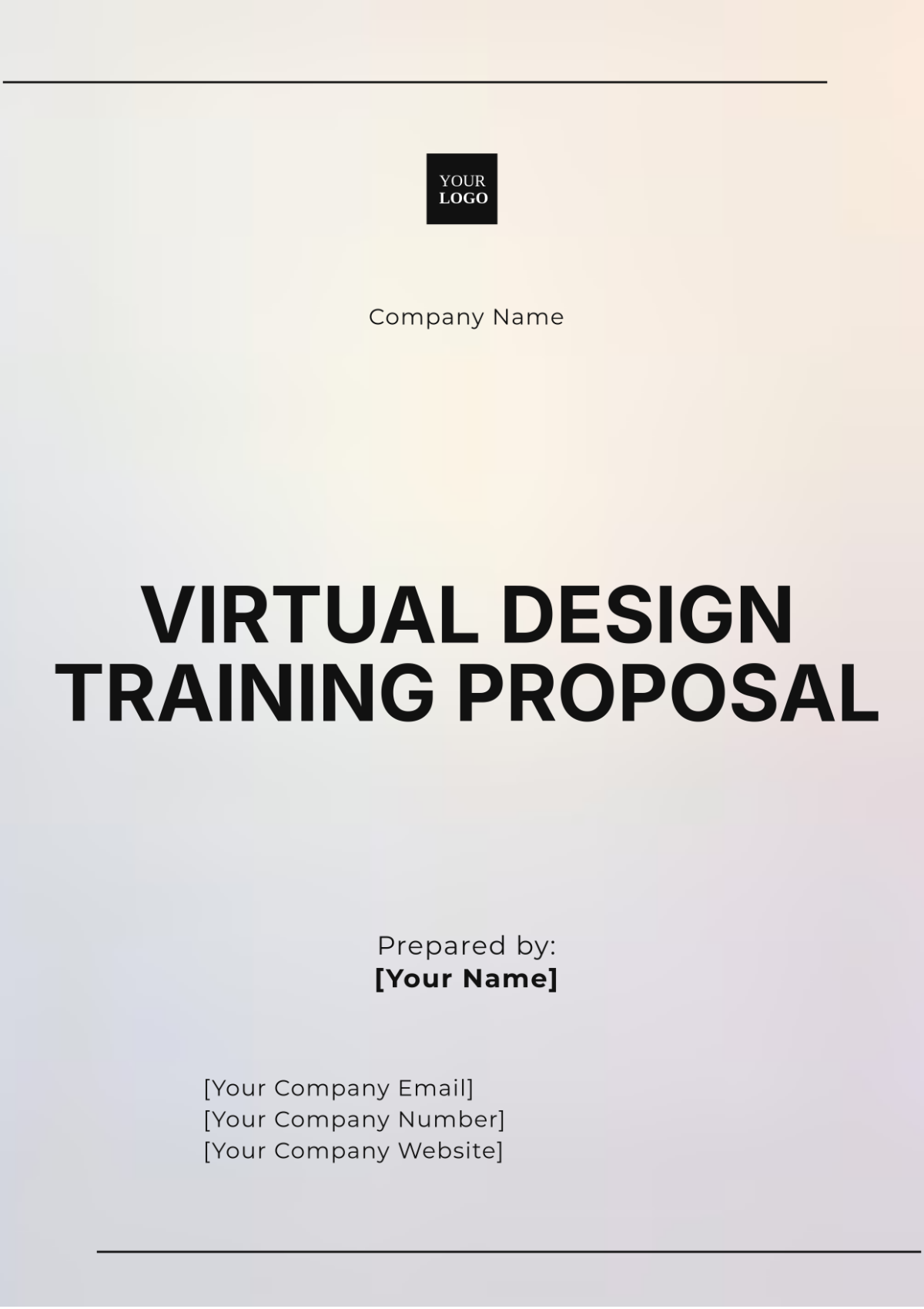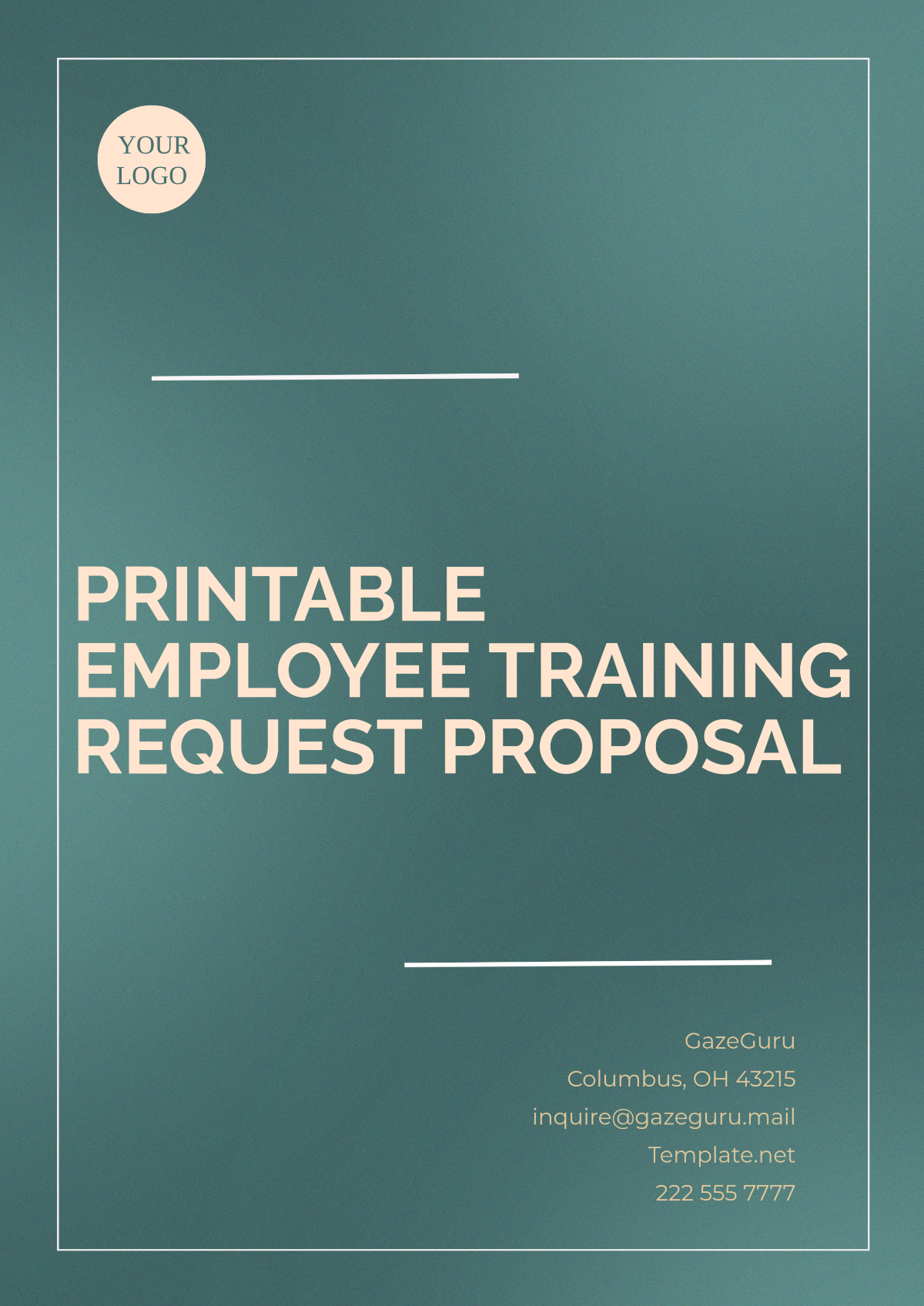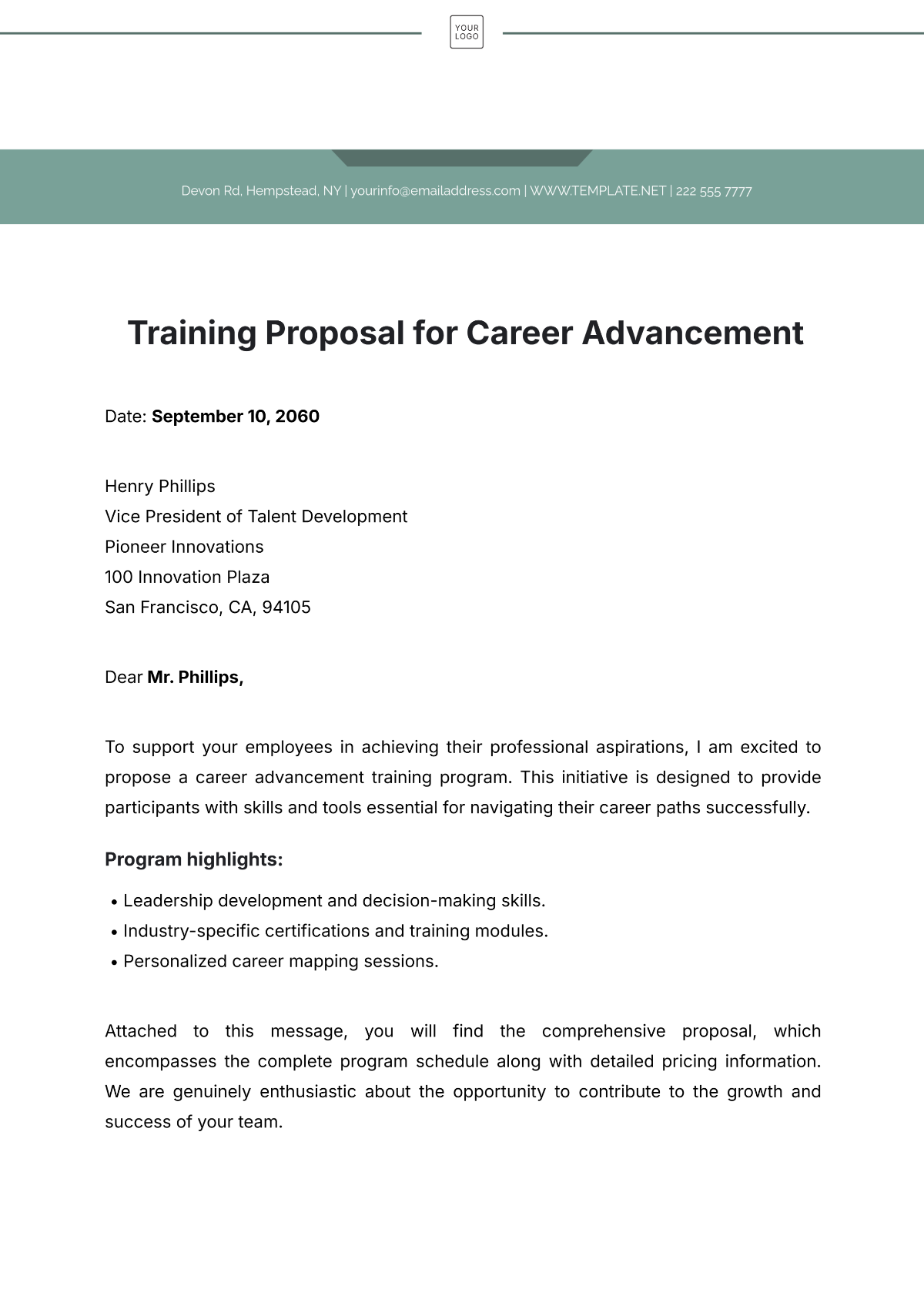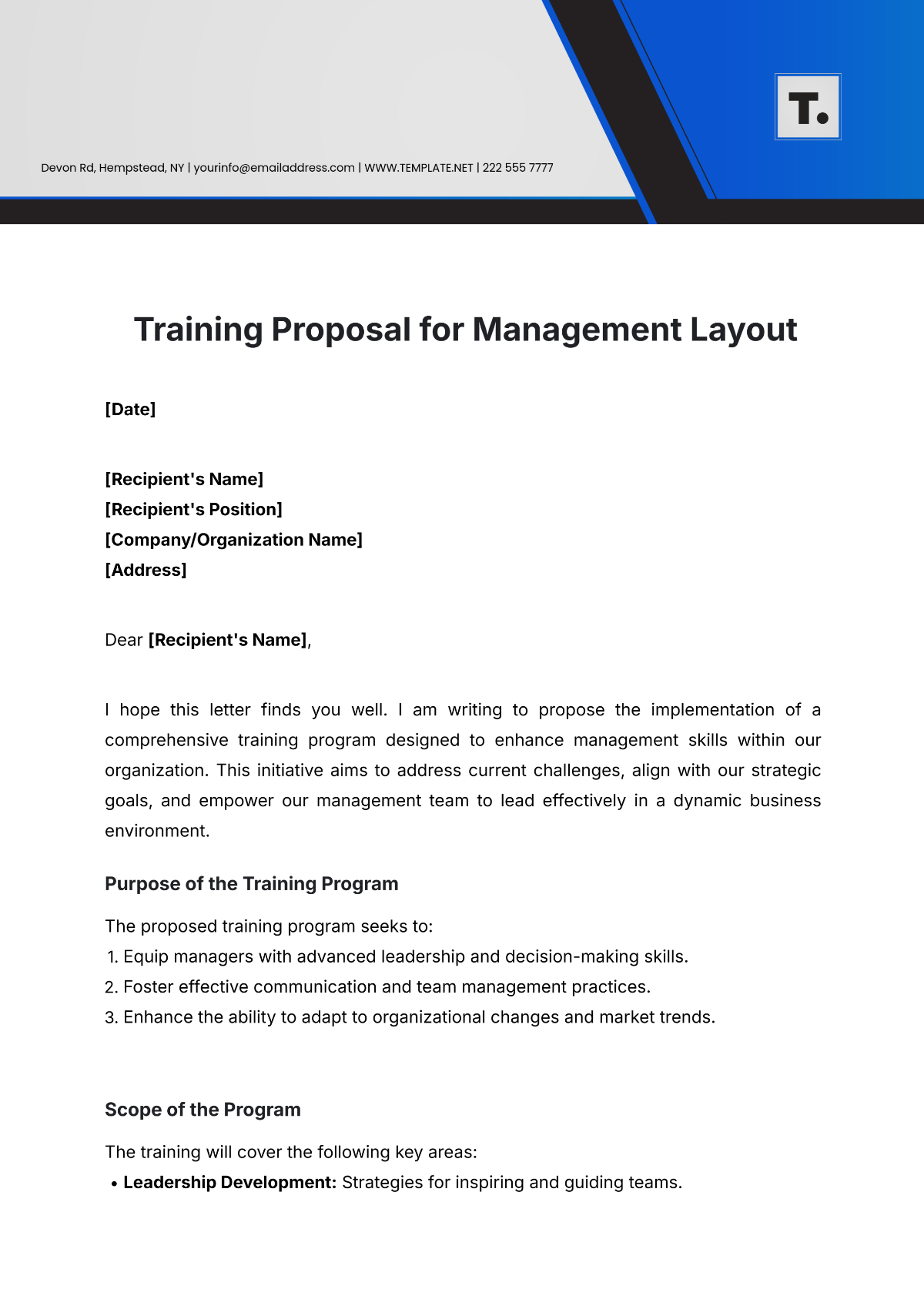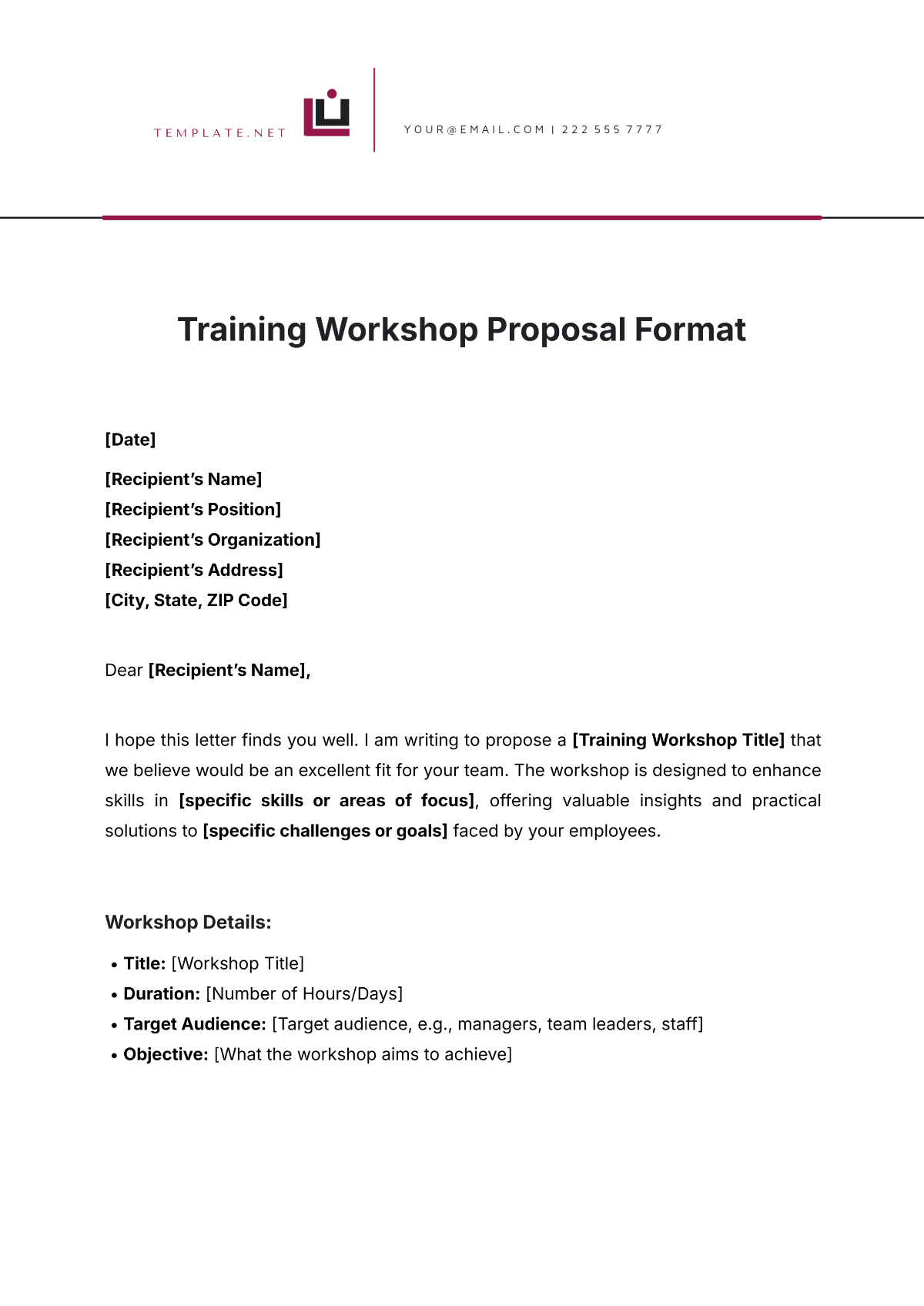Virtual Design Training Proposal
Prepared by: [Your Name]
Company: [Your Company Name]
Date: [Date]
I. Introduction
The shift towards digital platforms in education and professional development has led to an increased demand for virtual design training programs. As businesses and individuals adapt to remote work and online collaboration, having strong design skills becomes essential. This proposal outlines a comprehensive virtual design training program aimed at equipping participants with essential design concepts and skills necessary for success in today’s digital landscape. The training is structured to be accessible remotely, providing flexibility and enabling participants to engage from anywhere in the world. By integrating practical projects, interactive tools, and expert guidance, participants will develop a robust understanding of modern design principles and techniques.
II. Training Objectives
A. Primary Goal
To enhance the design proficiency of participants through an immersive virtual training experience that covers both fundamental and advanced design concepts. This training aims to cultivate not just technical skills but also a mindset geared toward innovation and collaboration in design.
B. Specific Objectives
Understand and apply basic design principles: Participants will learn how to leverage design elements such as balance, contrast, alignment, and repetition to create visually appealing work.
Develop skills in using design software tools effectively: Training will include hands-on exercises in industry-standard software, ensuring participants can navigate and utilize these tools in real-world scenarios.
Implement creative thinking and problem-solving strategies in design projects: Participants will engage in brainstorming sessions and exercises designed to enhance their ability to think outside the box and approach design challenges creatively.
Foster innovation and creativity in design processes: By exploring case studies and current design trends, participants will be encouraged to push the boundaries of traditional design.
Encourage collaboration and feedback within virtual environments: Utilizing digital collaboration tools, participants will work together on group projects and learn the importance of constructive feedback.
III. Curriculum Outline
Week | Topic | Description |
|---|---|---|
1 | Introduction to Design Principles | Exploration of fundamental design concepts, elements, and principles through engaging activities and discussions. |
2 | Design Tools and Software | Training on various design software such as Adobe Creative Suite, Sketch, and Figma, with guided tutorials and hands-on projects. |
3 | Typography and Layout | Study of typography, composition, and layout in design, focusing on creating visually coherent materials. |
4 | Color Theory | Understanding color theories and their application in design, including color psychology and its impact on audiences. |
5 | Advanced Design Techniques | Techniques such as 3D modeling, animation, and interactive design, incorporating cutting-edge tools like Blender and Adobe After Effects. |
IV. Methodology
A. Delivery Format
The training will be conducted through a combination of live online sessions, pre-recorded video tutorials, and interactive workshops. Each week will feature live discussions led by industry experts, supplemented by recorded materials for flexible learning. Participants will have access to a digital platform that allows for seamless communication and collaboration, ensuring that all learners can connect and engage regardless of time zone.
B. Interaction and Engagement
Interactive quizzes, group projects, and real-time feedback sessions will be integrated into the program to ensure participant engagement and application of learned skills. Regular check-ins and office hours will provide additional support, fostering a sense of community among participants.
V. Target Audience
The virtual design training program is designed for:
Design students: Individuals pursuing degrees in design disciplines who wish to complement their education with practical skills and industry knowledge.
Professionals: Those already working in creative fields looking to update or expand their design knowledge to remain competitive in the job market.
Entrepreneurs: Small business owners seeking design skills to enhance their brand identity and marketing materials.
Design enthusiasts: Anyone with an interest in learning design concepts and tools, regardless of their prior experience.
VI. Resources Required
To ensure the success of the training program, the following resources will be required:
Access to a computer/laptop with internet connectivity: Participants should have reliable devices capable of running design software and participating in video conferences.
Design software licenses: Licenses for industry-standard software will be provided to participants to ensure they can practice and apply what they learn effectively.
Video conferencing platform subscription: A subscription to a reliable video conferencing tool (e.g., Zoom, or Microsoft Teams) will be necessary for live sessions and workshops.
Access to an online learning management system: A platform such as Moodle or Canvas will be utilized for course materials, discussions, and assessments.
VII. Timeline
Phase | Duration |
|---|---|
Pre-Training Preparation | 2 weeks |
Training Sessions | 5 weeks |
Post-Training Evaluation | 1 week |
Suggested Timeline Breakdown
Pre-Training Preparation: Preparation of training materials, onboarding participants, and providing access to software and platforms.
Training Sessions: Each week will include two live sessions, one on the topic of the week and another for Q&A and project discussions.
Post-Training Evaluation: Participants will submit their final projects, and instructors will conduct assessments, providing feedback and certificates of completion.
VIII. Assessment and Evaluation
A. Continuous Assessment
Participants will be evaluated through regular quizzes, assignments, and project work. This continuous assessment approach ensures that participants remain engaged and apply their learning progressively. Weekly reflections will allow participants to articulate what they’ve learned and how they plan to implement it.
B. Final Evaluation
At the end of the training program, participants will undertake a final project that synthesizes their learning. Feedback and grades will be provided to measure skill acquisition and course effectiveness. This project will be showcased in a virtual gallery for peers and industry professionals to provide real-world exposure.
IX. Budget
Expense Item | Estimated Cost (USD) |
|---|---|
Design Software Licenses | 2,000 |
Platform Subscription | 1,500 |
Instructor Fees | 5,000 |
Marketing and Promotion | 1,000 |
Miscellaneous | 500 |
Total | 10,000 |
Suggested Budget Notes
Design Software Licenses: Consider seeking partnerships with software companies for discounts or free licenses for educational purposes.
Marketing and Promotion: Allocate funds for digital advertising, social media campaigns, and outreach to design schools and professional networks.
X. Conclusion
This virtual design training proposal seeks to deliver a comprehensive and engaging program tailored to equip participants with the relevant skills and knowledge necessary in today's dynamic design industry. By integrating interactivity and accessibility, the training program ensures both traditional design concepts and cutting-edge software skills are effectively taught. We invite you to be part of this innovative training opportunity, designed to empower creativity and professional growth in the virtual landscape. Together, we can cultivate a new generation of skilled designers ready to thrive in an increasingly digital world.
